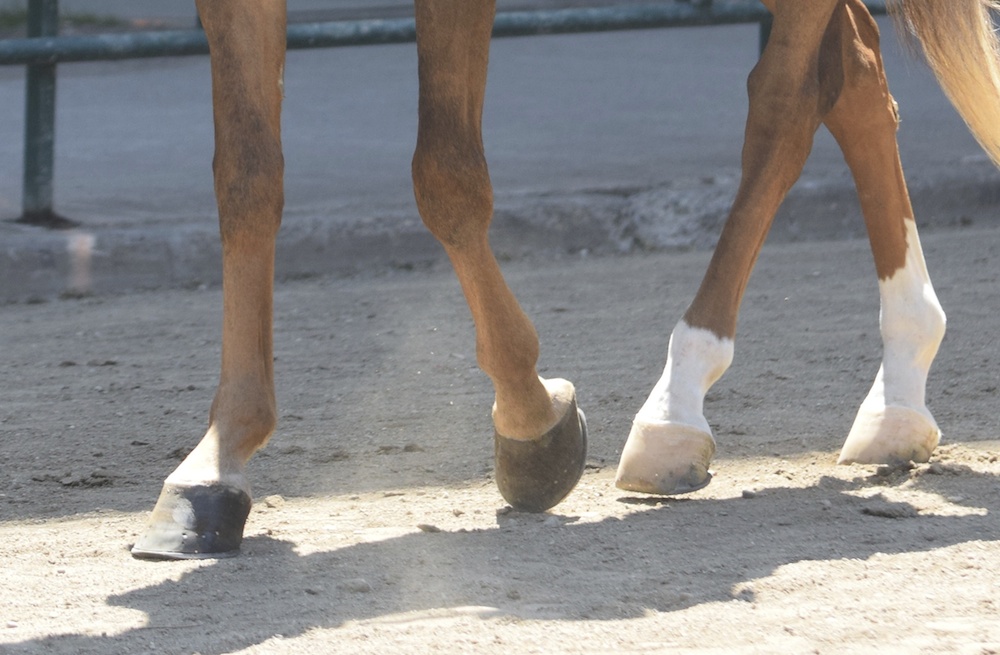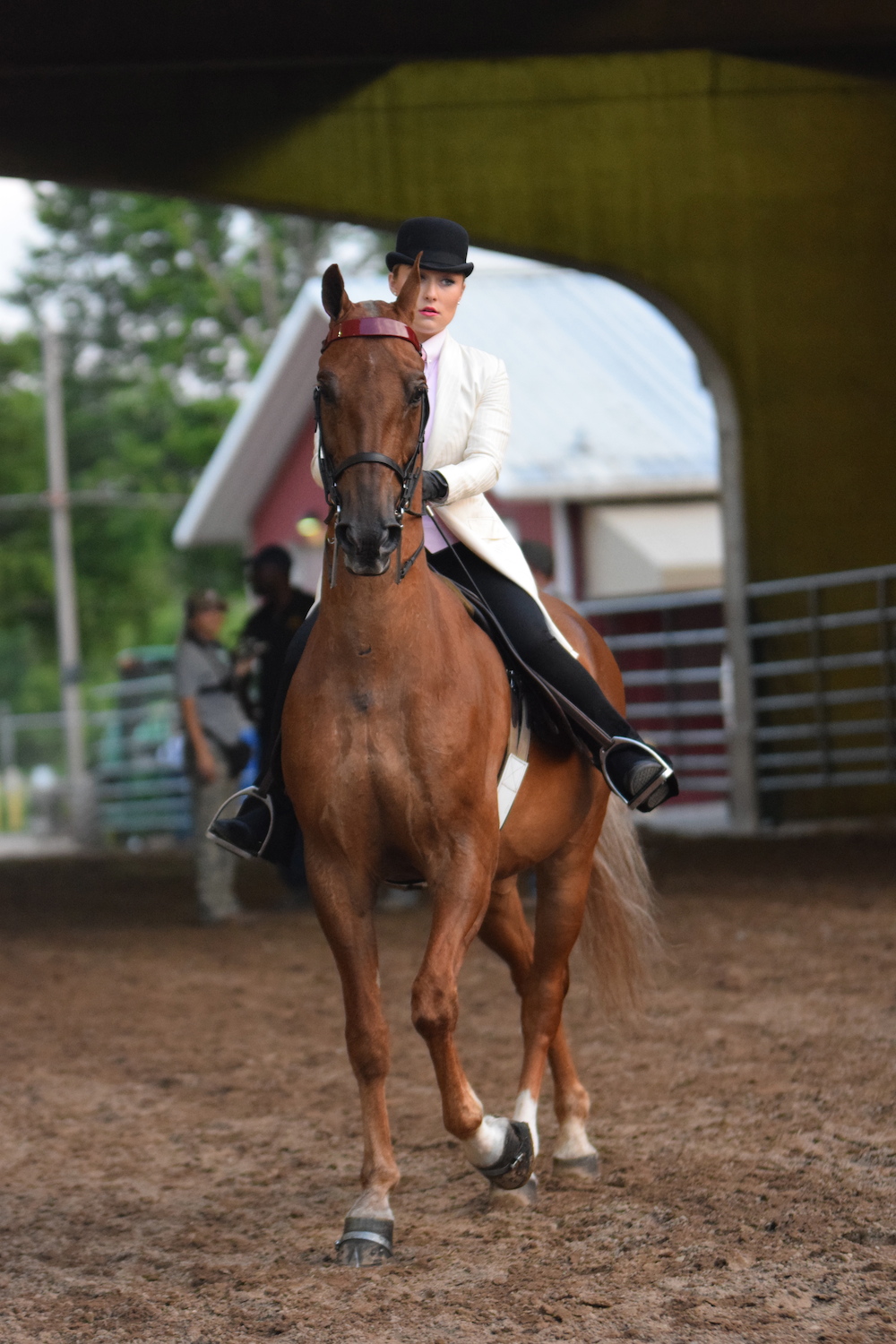 The flat walk is an often challenging and sometimes hated part of horse showing. For horses as energetic and eager as American Saddlebreds, this leisurely gait can seem painfully slow and intensely boring, yet it remains a vital part of the class specifications for the pleasure division.
The flat walk is an often challenging and sometimes hated part of horse showing. For horses as energetic and eager as American Saddlebreds, this leisurely gait can seem painfully slow and intensely boring, yet it remains a vital part of the class specifications for the pleasure division.
From horses that jig instead of walking, to riders that employ evasive techniques, everyone seems to be trying to avoid it. But the flat walk should not be dreaded but celebrated – and its importance recognized, but not exaggerated.
According to the United States Equestrian Federation rulebook, the pleasure division is where the calm, controlled and well-trained horse shines. His grandeur comes less from speed and strength and more from the ability to show that he is a trusted, consistent companion, “giving the distinct impression it is an agreeable mount to ride.” However, this appearance can only be achieved by meeting the full requirements of the class. This includes smooth transitions between gaits, an easy, smooth trot, an effortless canter, the ability to halt on the rail, back smoothly when asked and yes, to show a true and dependable flat walk.
Longtime judge and trainer Betsy Boone believes in the importance of the flat walk, but notes that it needs to be called for in the proper manner.
“It's nice to see judges put emphasis on a true flat walk,” she said. “But, a class shouldn't be tied on making the class walk excessively to justify tying (or beating) a particular entry.”
Additionally, a judge should take care not to penalize the flat walk excessively, to the exclusion of other faults.
“It's all subjective, but a judge has to weigh one fault against the other since you need to place the best horse making the best show,” she said.
To avoid faults, Betsy has seen exhibitors use many different evasive techniques to cover for their horse’s lack of a flat walk.
 “As a judge you do not like to see a horse stop when they are to be walking,” she said. “That's the oldest trick in the book, to stop and stand knowing your horse will not walk. Walk is another required gait and if you are stopped (and even worse turned sideways) you are not fulfilling the requirements of the class.”
“As a judge you do not like to see a horse stop when they are to be walking,” she said. “That's the oldest trick in the book, to stop and stand knowing your horse will not walk. Walk is another required gait and if you are stopped (and even worse turned sideways) you are not fulfilling the requirements of the class.”
Making multiple passes when the class has been called to the walk is also an ineffective way to avoid the flat walk.
“As a judge, it is offensive when an entry continues to make several passes to ‘burn up’ their walk time while the balance of the class is walking,” she said. “Again, the judge knows what you are up to. Often a judge will just call the next gait and tie an entry down for never walking.”
The tricks don’t just happen in under saddle classes, either.
“In a pleasure driving class the entry that continues the first direction and doesn't reverse in a timely manner is controlling that class, since it's unsafe to trot until all are reversed,” she said. “Again, the judge knows what you are doing and why and you can be penalized.”
Even if your horse dislikes flat walking, instead of avoiding it, many judges would rather see you try – and who knows, maybe your horse will be feeling extra cooperative that day.
“An attempt is better than a trick,” Betsy said. “So basically a true flat walk is impressive and is important, but you can't trick your way into fooling a judge.”
To exhibitor Lynn Brown, the importance of the flat walk is obvious. She has found consistent success in the pleasure division with her partner CH Kalarama’s Mesmerized, and so has spent a lot of time flat walking.



